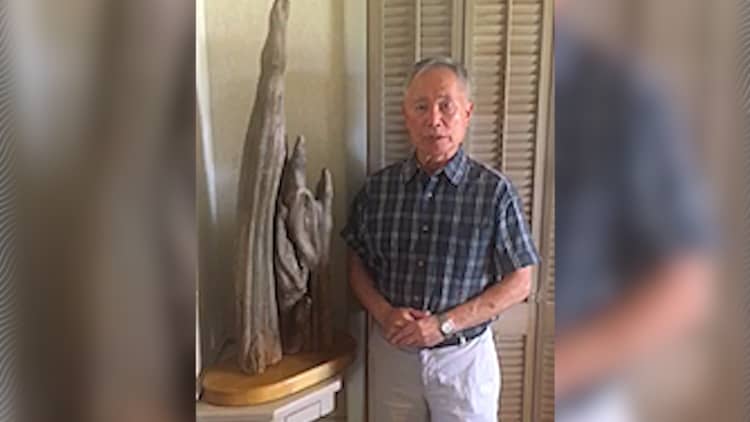Long before George Takei became famous for his portrayal of Hikaru Sulu, helmsman of the USS Enterprise on "Star Trek," as a young Japanese American he was deemed an "enemy of the country." With his family, Takei was relegated to internment camps in the wake of the 1941 bombing of Pearl Harbor.
It is an ugly part of the United States' history, and a traumatic part of Takei's life.
But it was also transformative: It was during that time that Takei learned what resilience means from his father, Takekuma Norman Takei.
"My father said resilience isn't all just teeth gritting, strength and endurance — it's also the ability to find beauty in an ugly situation or an ugly place, to make your joy," Takei tells CNBC Make It.
"My father said ... we think of resilience as flexing the veins on our throat and [saying], 'I'm going to survive — fortitude," Takei says. And "that is part of resilience, but ... you're going to be exhausted when it's flexing all the time."
So you have to "look around and see beauty" too, Takei says his father taught him.
Takei's father lived the lesson. One thing Takei remembers in particular, was at their first interment camp, Camp Rohwer, in the swamps of Arkansas — his father carved a sculpture from the root of a cypress tree.
"The bayou would seep up under the barbed wire fence. And the amazing thing about the bayou is these Cypress trees grew out of the water," Takei says. "My father was able to wade out and find an interesting root..., saw it off and boil it in an oil drum, and peel the bark off. And lo and behold, there's Mother Nature sculpture, something beautiful there," he says.
Another way Takei's father would create beauty was to negotiate with camp commanders to let the teenagers have dances with a record player brought in by the guards.
Takei was too young to attend the dances, but he would listen to the music through the wall.
"Because our our barrack was right next to the mess hall, my mother put us to bed, but I remember hearing the sounds of the big band — music sounds of the '40s wafting over the night air to our barrack....Tommy Dorsey, Glenn Miller, The Andrew sisters."
Some of the teenagers who met in those dances went on to marry, George Takei says.
The dance, "that is part of what made us survive," Takei says.
"Even in these ugly circumstances you make your joy, you find beauty. You see unhappiness? Well, make happiness. Organize dances, make people happy,"
As for the root sculpture, the Takei family brought it from Arkansas to a second internment camp, Camp Tule Lake in northern California. Then when World War II ended and the internment camps were shut down, they brought the sculpture home with them to Los Angeles.
To this day, Takei has his father's sculpture displayed in his L.A. home.
"This is part of resilience. You can't just be moping and wallowing in your misery, in your pain. You have a right to it because you are in a horrible situation, but you can't remain in that," George Takei says.
"You've got to make your joy, find your beauty."
See also:
Kamala Harris learned from her mom who always asked, 'Well, what are you going to do about it?'
Malcolm Gladwell: You can't know someone in 10 seconds or on social media, and it's dangerous to try
Young immigrant brothers are teaching AI to high-schoolers for free to give back




